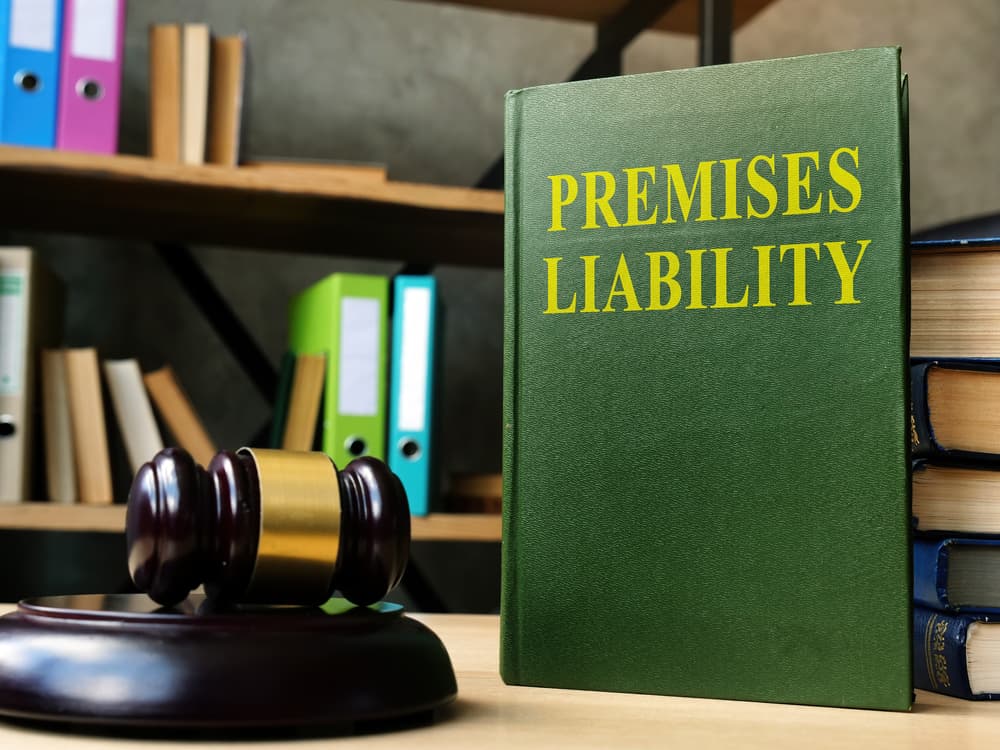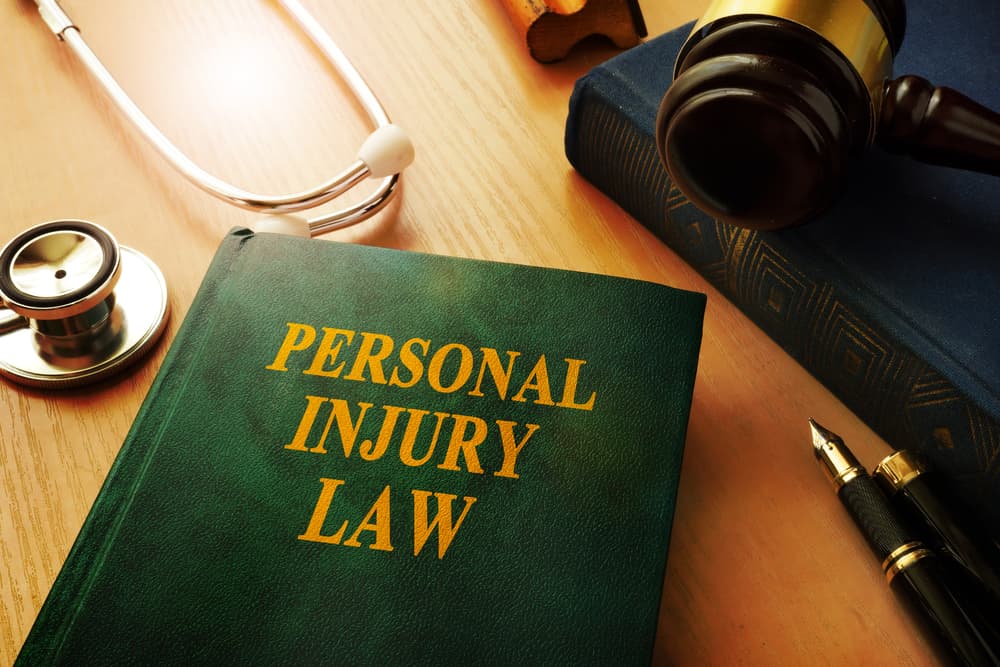
When You Need a Lawyer to Help Recover Compensation
A serious accident can completely change the course of your life. Serious injuries can cause immense complications: preventing you from working, interfering with your ability to engage in common leisure activities, or even making it difficult for you to spend time with friends and loved ones.
Have you suffered any of these serious injuries in an accident? Did someone else cause them? Call a New Port Richey personal injury lawyer sooner rather than later so you can pay for the treatment you need to recover.
Traumatic Brain Injury
Victims with traumatic brain injury, however, may find themselves with considerably more problems than long-term memory gaps alone. Traumatic brain injury can also cause a host of other cognitive deficits. Some victims may find that traumatic brain injury impacts their short-term memory more than their long-term memory. They may have a hard time going through cabinets, finding specific items, or simply remembering why they walked into a room. They may struggle with instructions, especially verbal instructions.
Others with traumatic brain injury may have trouble with focus or concentration that prevents them from keeping their attention on the tasks they need to deal with every day. Traumatic brain injury can also cause struggles with emotional control, since many victims with traumatic brain injury have a hard time regulating emotion.
They may react with inappropriate force to relatively minor emotional stimuli, or they might react inappropriately to the situation at hand—anger instead of sadness or even sadness instead of humor, for example. Mood swings become common in people recovering from traumatic brain injury. Furthermore, traumatic brain injury may cause some physical symptoms.
- Headaches
- Tunnel vision
- Changed sleep patterns, including either insomnia or excessive sleep
- Nausea
- Vertigo
Back and Neck Injuries
Back and neck injuries occur commonly when slip and fall accidents or car accidents expose the spine and the muscles around it to a great deal of force and trauma. Back and neck injuries may vary in severity depending on how the accident occurred and the extent of the victim’s injuries.
Herniated Discs
Rubbery cushions, or discs, protect and cushion the bones of the spine, or the vertebrae. These discs have a soft, jelly-like center encased in a tougher outer layer. When some softer material at the center of the disc pushes out through a tear or rupture in the outer part of the disc, you may notice:
- Pain
- Tingling in a nearby part of the body
- Numbness in the affected part of the body
Most often, herniated discs occur in the lower back and neck, otherwise referred to as the lumbar spine and cervical spine. However, they can appear at any point on the spinal cord, depending on how the accident occurred, the force involved, and the location of the trauma.
Spinal Cord Injuries
Spinal cord injuries represent some of the most serious injuries a victim can suffer in an accident. Spinal cord injuries occur when the spinal cord itself suffers damage. In an incomplete spinal cord injury, the spinal cord does not sever completely. However, the partial break can result in decreased mobility or loss of sensation below the injury. Some victims with incomplete spinal cord injuries can experience some healing after the incident.
Victims with complete spinal cord injuries, on the other hand, usually suffer complete paralysis below the site of the injury. They may need to use a wheelchair to get around. Injuries high on the spinal cord can affect the arms, hands, and legs, which may increase mobility and independence challenges.
Whiplash
For some patients, it resolves fairly quickly. Others, however, find that the symptoms of whiplash linger long after the initial accident, interfering with their normal daily activities. Whiplash can also cause chronic pain.
Sprains and Strains
Sprains and strains of the back often occur because of an acute accident, but can also occur through repetitive stress, especially in a job that routinely requires heavy impact. Sprains and strains often occur because of sudden falls or twists, including the force often experienced in a car accident.
Sprains and strains can include muscle spasms and cramps or pain that increases with specific movements. Those injuries can make it difficult for the victim to stand upright, sit in certain positions, or bend normally. Walking can increase pain in some cases. Sprains and strains can cause lingering pain, especially if the victim tries to overdo it after the initial injury.
Burns
From construction site accidents to car accidents, many serious accidents can result in severe burn injuries.
- First-degree burns involve only the top layer of the skin and may cause some minor redness.
- Second-degree burns, on the other hand, may involve the top two layers of the skin and create redness, ongoing pain, and scarring.
- Third-degree burns often involve muscle and underlying tissue. In some cases, third-degree burns can permanently damage the nerves in the affected area, which means they may not cause substantial pain at all but result in more severe complications.
Burns also lead to a high overall risk of complications, including infection, since burns take away the protective layer of skin that helps prevent bacteria from entering the body. Burns can occur in several ways.
Heat Burns
When most people think of burns, they usually consider heat burns first. Heat burns occur due to exposure to heat or open flame. Some extreme heat burn-related accidents have occurred due to the victim’s exposure to hot water.
Electrical Burns
Electrical burns occur when the victim gets exposed to high-voltage electricity. While the victim may suffer clear evidence of electrical burns on the entry site on the body, electrical burns can cause even more havoc inside the victim’s body. Electrical burns can lead to heart damage, organ damage, or internal burns, all of which can cause extreme complications.
Cold Burns
Extreme cold can cause the same damage as heat-related burns. Victims with cold burns, often known as frostbite, may experience reddened or blackened skin, which may lead to extreme scarring.
Chemical Burns
Exposure to toxic chemicals for even a brief time can cause chemical burns. Extremely toxic chemicals can cause burns or damage to the lungs, eyes, and throat after even minor exposure. In some cases, chemical exposure can cause other, more extreme risks and damage.
Friction Burns
Friction burns occur when the victim’s skin gets dragged across another object, usually a rough object, at a high rate of speed. Friction burns, also called road rash, commonly occur in construction site accidents when victims face exposure to heavy machinery or during auto accidents, including pedestrian or motorcycle accidents. Friction burns sometimes have a higher risk of infection than other burns, since they may introduce more foreign matter into the body at the time of the incident.
Amputation
Accidents involving extreme force and trauma can amputate a limb. Amputation may occur in one of two ways. Sometimes, the force of the accident may cause an immediate limb amputation. In other cases, however, the victim may suffer extreme crushing damage that doctors cannot repair, or crushing damage that results in a loss of blood flow to the limb. As the tissue dies, doctors may need to amputate the limb to prevent further infection and, ultimately, death.
Amputees must learn how to cope with the missing limb. While prosthetics can offer some increased independence, they can also be extremely expensive, and they require replacement periodically for the rest of the victim’s life. Amputees may also face stump revisions and ongoing physical or occupational therapy, which can further increase their medical costs.
Loss of Vision or Hearing
Some types of accidents can lead to a loss of vision or hearing in the victim. Losing a sense can make the victim feel isolated and adrift. People who lose their senses later in life, in particular, often have a harder time learning to cope with those limitations than victims who may have lost their senses as children.
Loss of vision or hearing often occurs due to exposure to chemicals, loud noise, or extreme head injuries. Sometimes, a head injury can cause the loss of a sense. Many victims need extensive therapy to learn how to cope with those limitations, including occupational therapy that can help them learn how to accommodate for those losses.
Facial Injuries
Many victims find that facial injuries cause particular trauma. Facial injuries often involve a permanent change in appearance, which can cause significant psychological problems for many victims. In addition, people with facial injuries may feel as though they cannot work in certain fields, including modeling. Many people with severe facial injuries may feel withdrawn or disconnected from other people, especially if they have suffered a long healing process or feel particularly disfigured.
Plastic surgery can help some patients with facial injuries restore normal appearance. Even with plastic surgery, however, many victims may find their appearance permanently changed, which may lead to ongoing trauma.
Broken Bones
For many patients, broken bones can cause immense complications. For some, a broken bone simply requires wearing a cast for a little while so that the bone can have a chance to heal. For others, however, healing after suffering a broken bone can take considerably more time. Some victims with broken bones require surgery to properly set the affected limb and increase the potential for a full recovery. Others, especially those who suffer from multiple broken bones, may need to go through long-term physical therapy to restore strength and flexibility in the affected area of the body.
Broken bones can also cause considerable complications while they heal. Many victims struggle with a significant loss of independence after suffering serious broken bones. Others may suffer from ongoing pain in the impacted area of the body, even years after the initial injury.
Furthermore, the elderly may suffer particularly damaging repercussions following serious broken bones. In some cases, broken bones can lead to permanent disability, particularly if the elderly patient ends up bedridden for a long time while recovering. In some cases, elderly patients can even die from the trauma associated with a serious injury.
A Personal Injury Lawyer Can Help You Today
The aftermath of a severe accident can cause a wide range of potential dangerous injuries, all of which can permanently change the course of a victim’s life.
Any time you suffer severe injuries in an accident, contact an experienced personal injury attorney as soon after the accident as possible to learn more about your right to compensation and protect the compensation you can recover.



